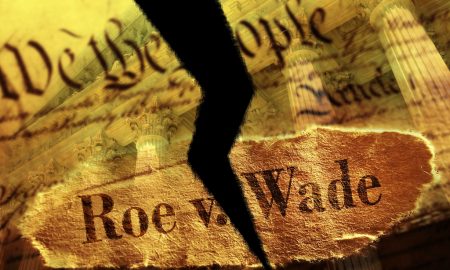Paul Samakow has been a trial attorney exclusively representing injury survivors and their families since 1980. His national burn injury practice has taken him to numerous parts of the country representing the interests of burn injury survivors.

Burn injuries, according to many doctors, are the single most difficult type of injury to treat, because they can affect virtually every part and system in the body. They are traumatic – they are an absolute assault on the body. They can cause devastating physical, and potentially worse psychological effects. Burn injuries can produce a lifetime of disfigurement, pain, medical treatment, and emotional, vocational, social and emotional difficulties.
Burn injuries can result from fire, including smoke inhalation, heat, scalding water, radiation, electricity, and chemicals.
The course of treatment for burn injuries, depending upon the severity of the burns, can be complicated, and extensive. Doctors describe those burns involving more than twenty (20) percent of the body surface, or any deep (third degree) burns over ten (10) percent of the body as “critical.”
The documentation of a survivor’s trauma and treatment should include the early stages of treatment. Survivors often need a great deal of fluid to prevent shock, and to compensate for the loss of body fluids. The fluids are often delivered intravenously. This process often causes the body to swell, extensively – often to twice the normal size.
A survivor suffering from smoke inhalation might be given mechanical ventilation. If breathing difficulties are severe, a tracheostomy – an surgical procedure that creates an opening at the front of the neck so a tube can be inserted into the windpipe (trachea) – to help breathing. If necessary, the tube can be connected to an oxygen supply and a breathing machine called a ventilator.
Most burn survivors undergo daily debridement – a painful procedure involving scraping away of dead skin. Escharotomy, a deep surgical incision performed to release pressure on arteries and veins caused by swelling, is another common procedure many burn survivors must undergo. These procedures are usually done while the patient is under sedation, they nonetheless contribute to a protracted and painful recovery.
Therapy for burn patients typically begins after the acute care phase (which might be months). Therapy can last months, or years, again depending upon the extent and severity of the injuries.
An experienced Plaintiff’s burn injury attorney will explain and document all the above to insurers for “at fault” parties, or to a jury if the compensation for injuries cannot be resolved out of court. One method to explain “pain and suffering” might include the showing of some of the devices used and made for burn therapy. Custom-made fitted pressure garments are included in this showing. These garments are used to cover burned areas and are designed to prevent thickening of burn scars and can be worn for up to 23 hours a day, perhaps for as long as two years. Dressing changes, to assure infections do not set in, can be extremely painful. Therapeutic splints for fingers, arms, legs, and the neck might be required to prevent contractures and deformities. Showing these helps convey the extensive level of life -disruption a survivor endures.
Tissue expansion surgery might be used, involving the insertion of silicone bladders and balloons may be used under undamaged skin near the damaged skin. The bladders have a plastic tube through which a saline solution is infused to stretch healthy skin. Over a period of weeks, this process stimulates the growth of additional healthy skin to help cover the damaged area.
Documenting pain is an important part of recovering full compensation for a burn survivor. All burn patients experience excruciating pain, because nerve endings are exposed and damaged when skin is burned off. Further, when skin grafting is performed, the “donor” site basically becomes a very painful second-degree burn.
Pain is often not well documented in burn units or hospitals. Skilled burn-injury attorneys will thus get testimony from nurses and therapists where care was given – these providers can provide perspective because they were “first line” in treatment and got to know the patient.
As well, burn unit social workers often provide information and perspective about the patient that can be invaluable in showing the torment and ordeal patients undergo.
Family members who keep diaries are another source of excellent documentation for survivors’ experiences. These diaries can be exceptional when detailing procedures that the patient cannot recall because of medications given during them, or, clearly, because the patient does not want to remember.
Psychological suffering can take longer than physical recovery, and that suffering often sees a gradual adapting to changes. Many patients literally fear for their survival. This fear can be overwhelming and all-consuming.
Fear and anxiety are surface issues. Memories, poor concentration, and lack of cooperation are often seen as well once survival is no longer an issue for the patient. Adapting to their situation, patients must deal with at least two types of physical pain: continuous, from damaged tissues; and acute, caused by mechanical or chemical intervention for treatment to those damaged tissues – again, dressing changes and splinting. Where pain control is inadequate during these changing processes, a patient might well associate greater pain and develop behaviors the hurt the treatment, which in turn prolongs the time needed for the treatments.
Many patients, understandably, get to a search for “why did this happen to me?” They want to discover an explanation. A failure to resolve this issue can morph into Post-traumatic Stress Disorder, which in itself is a potentially disabling and chronic disorder resulting from traumatic events.
Not all burns are severe. Unfortunately, some with less severe burns often have similar psychological problems. Where burns can be hidden by clothing or hair, the survivor might well develop tremendous psychological problems because of their burns.
Facial burn injuries subject the survivors to psychological complications. They feel they are less accepted than others with different types of physical issues or disabilities. Some authorities believe the trauma caused by severe facial burns may put the patient at an increased risk for suicide.
Mental health professionals suggest that the optimal time for emotionally overwhelmed survivors to start psychological treatment is three months. While this might be “too soon” according to the patients, it must be understood that their reluctance might be a desire to hide their pain, or an effort to avoid reliving excruciating memories.
An experienced burn injury attorney should know all the issues attendant to their client to be able to present them to either insurers or juries. This knowledge comes from experience. That experience allows the attorney, faced with many challenging issues confronting their client, to help the client and the client’s family to fully understand the client’s journey, and to help the client cope with their “new” life going forward.
To learn more about Burn Injury resources and legal counsel, contact attorney Paul A. Samakow at 703-472-7688 or visit his website: https://nationalburnattorney.com
























